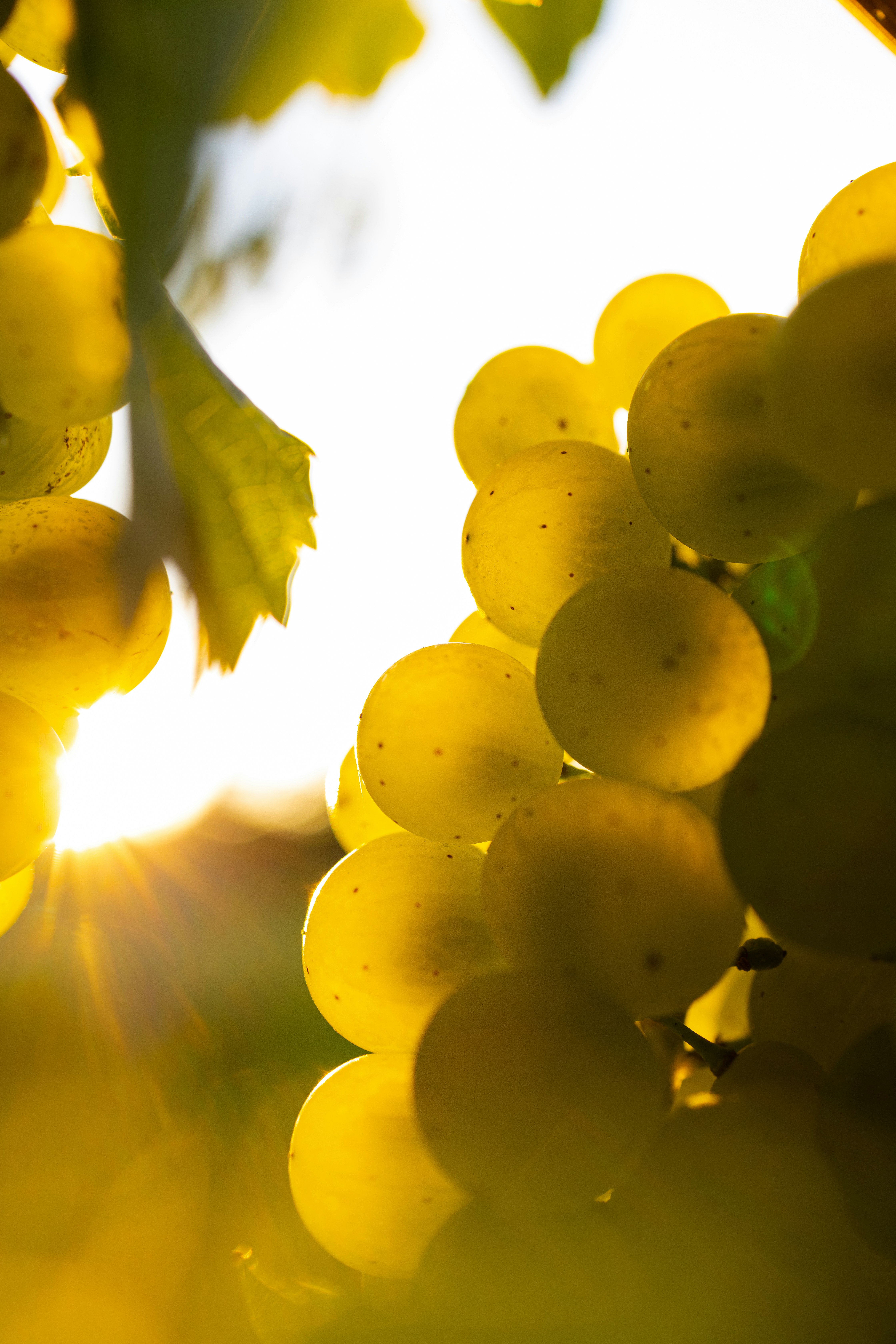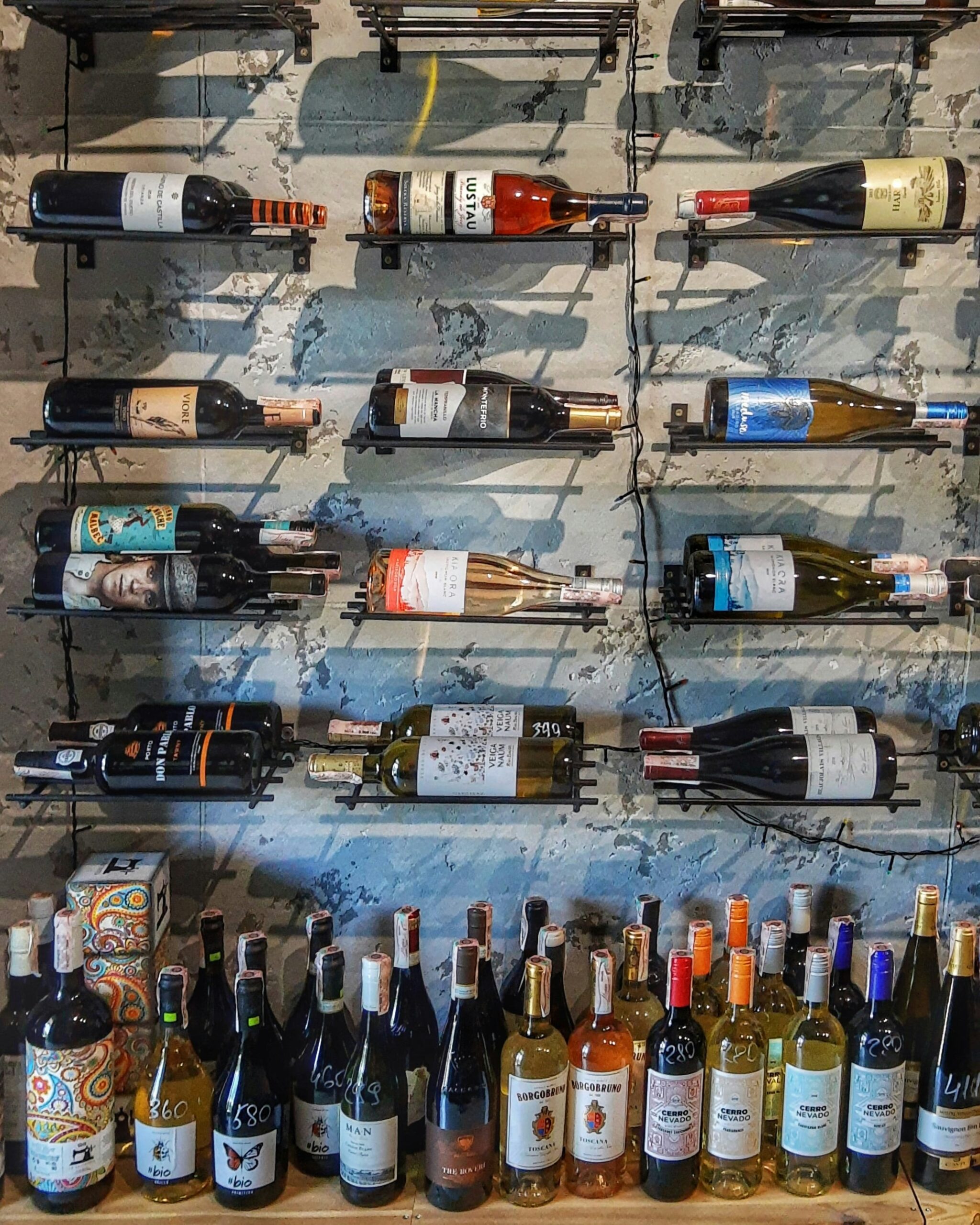In this blog post, I am uncorking the truth on how much sugar is really in white wine!
I received a comment on one of my Instagram posts asking for red wine recommendations because white wines are loaded with sugar! There is a common misconception about how much sugar is in white wine.

If you’ve ever hesitated to pour yourself a glass of white wine because you’ve heard it’s packed with sugar, this post is for you.
Sugar in White Wine – Where Does it Come from?
Before we talk about the sugar in white wine, first, let’s get to the bottom of where the sugar in wine comes from in the first place.
The sugar in wine originates from the natural sugars in grapes. All grapes start off tiny, green, and high in acid. During the vine growth cycle, grapes increase in sugar levels all the way up until harvest. Vineyard managers and winemakers are able to measure the sugar level, or brix, to decide the perfect time to pick.

During fermentation, yeast converts these sugars into alcohol. If the yeast feeds on all the available sugar, then the wine will be dry. If the fermentation is stopped before all the sugar is consumed, there will be residual sugar (RS) and this will determine how sweet the wine is.
When it comes to white wines, the sugar content can vary significantly depending on the style of the wine. In the section below, we’ll share the sugar content in a standard 5 oz glass of wine.
Let’s break it down:
Dry White Wines
Dry white wines, such as Sauvignon Blanc and Chardonnay, have little to no residual sugar. These wines typically contain less than 1 gram of sugar per glass. They’re crisp, refreshing, and a great choice if you’re concerned about sugar intake.
Other dry white wines to try include Albariño, Pinot Grigio, Assyrtiko, Soave, Grüner Veltliner, and Vinho Verde.
Off-Dry White Wines
Off-dry white wines, like Riesling, have a slightly higher sugar content. However, the amount is still relatively low, usually around 1-3 grams of sugar per glass. These wines offer a hint of sweetness without being overpowering.
Other off-dry white wines to try include Gewürztraminer, Chenin Blanc, and Pinot Blanc.
Sweet White Wines
Sweet white wines, such as Moscato, contain more residual sugar, ranging from 3-7 grams per glass. These wines are often enjoyed as dessert wines because of their sweeter taste.
Other sweet white wines to try include Moscato d’Asti, Vouvray (from Chenin Blanc), and sweet Riesling.
Dessert Wines
Finally, we have dessert wines such as Sauternes, which can have significant amounts of sugar. Sometimes, these wines contain over 10 grams of sugar per glass. They’re typically sipped in smaller quantities and savored for their rich, sweet flavors.
Other dessert white wines to try include Tokaji, Ice Wine (Eiswein), and Vin Santo.
Putting Sugar in White Wine into Perspective
To put things into perspective, let’s compare the sugar content in white wine to other common beverages. A standard can of soda contains about 39 grams of sugar, or approximately 17 grams per 5 oz glass, which is significantly higher than even the sweetest white wines.
Even the dessert wines, with their higher sugar content, don’t come close to the sugar levels found in sodas and many other sugary drinks. So, while some white wines do have sugar, it’s often in much smaller amounts than you might think.
Enjoying White Wine Responsibly

So, what does all this mean for your next glass of white wine? Here are a few tips to enjoy white wine without worrying too much about the sugar:
- Choose Dry Wines: Opt for dry white wines like Sauvignon Blanc or Chardonnay. These typically have the least amount of residual sugar.
- Check Labels: Some wines list their sugar content on the label in the form of RS. Look for this information if you’re trying to manage your sugar intake closely.
- Check the ABV: A useful rule of thumb is the lower the alcohol, the sweeter the wine. Wines with an alcohol-by-volume (ABV) of 11% or lower tend to taste sweeter than wines with higher ABV levels.
- Moderation is Key: As with all things, moderation is important. Enjoying a glass of white wine now and then is unlikely to have a significant impact on your overall sugar consumption.
Conclusion
So, there you have it! The myth that white wines are full of sugar is just that – a myth. While some white wines do contain sugar, the amounts are generally low, especially in dry varieties. You can enjoy your favorite glass of white wine without worrying about consuming too much sugar.
If you found this post helpful, feel free to share it with your friends. Cheers to enjoying your glass of white wine with newfound knowledge and confidence!
